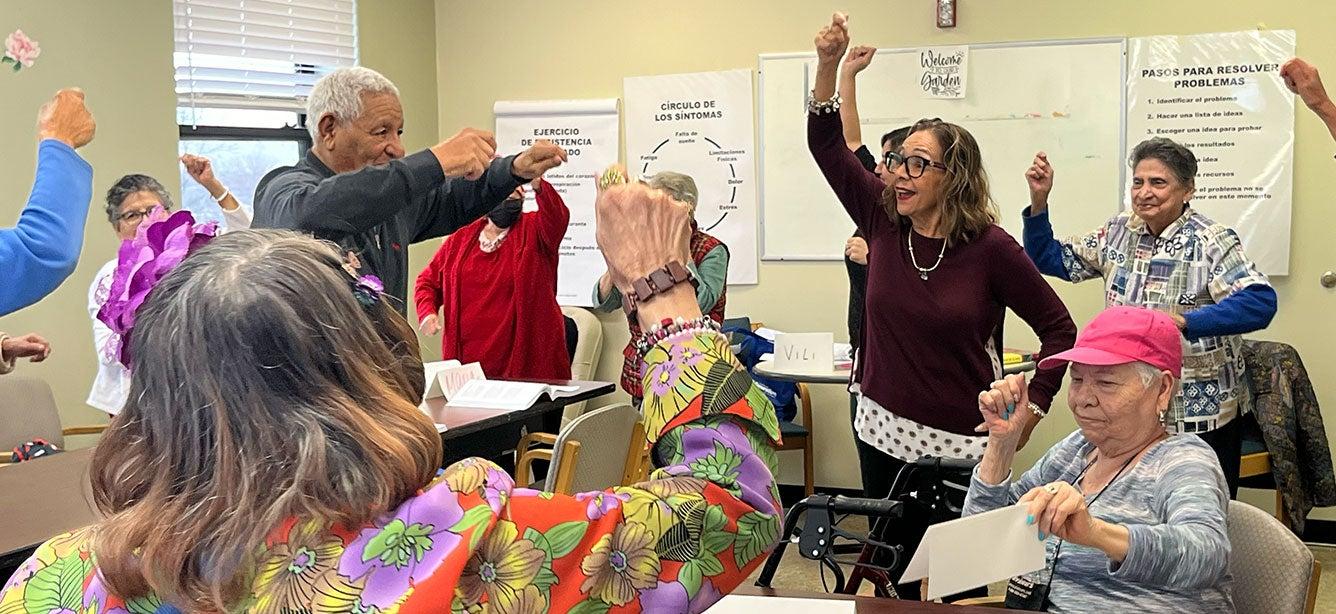Delivery Infrastructure and Capacity
10 min read

Facilitator infrastructure
An effective delivery infrastructure includes an appropriate number of active master trainers, an adequate number of lay leaders, and sites to host evidence-based programs across the targeted geographic area; a mechanism or system to track master trainers or leaders statewide; ongoing communications, professional development, support, and other trainer and leader retention strategies; and appropriate program licensing.
Experience from the field tells us these proven strategies can help build a strong delivery infrastructure.
Recruitment strategies
- Rather than recruiting as many leaders as possible, a more efficient strategy is to invest in training a small number of dedicated leaders. This involves developing a recruitment strategy, screening potential leaders, and securing commitment from leaders.
- Where do you find potential leaders?
- Volunteer groups, support groups, etc.
- Social media, newsletters, post on your website or volunteer recruitment sites such as Volunteermatch.org
- Previous workshop participants and through existing leaders
- After receiving interest from the community, a best practice is to screen potential leaders by asking them to fill out an application, complete an in-person or phone interview, and/or attend an orientation. Some evidence-based programs require extensive training and workshop requirements, and it is important to verify that volunteers are committed.
Recruitment resources
- New York: Protocol to screen CDSME Leaders
- Matter of Balance Master Trainer Application Form
- Sample Volunteer Screening and Orientation Materials for Evidence-Based Programs
- Sample Memorandum of Understanding (MOU) for state CDSMP licensure
Retention strategies
Retention starts with recruitment. It is important to set expectations from the start on what it takes to maintain facilitator status and how many workshops per year are required. This can be done through a Leader Agreement or Memorandum of Understanding.
- Regular communication with leaders about new opportunities and updates is critical. It can also be beneficial to provide opportunities for facilitators to network and mentor each other. Many organizations also show appreciation throughout the year whether that is an annual event, thank you cards, or shoutouts in a newsletter or on social media.
- To support leaders during workshop delivery, other materials that might be helpful include creating a checklist or a manual for the leader to refer back to.
- The training for leaders is not complete once they become certified. Leaders need continued education and professional development around evidence-based programs.
- Facilitator Skill Videos from SMRC
- After you train instructors, your organization will need to track their certification and the workshops they complete over time to ensure they remain in compliance. The system to track certification can be as simple as using an Excel spreadsheet or Access database to more extensive systems. Below is a list of few systems that are designed for evidence-based programs. Please note this list is not inclusive of all database systems.
- Tai Chi for Arthritis Instructor Statement of Understanding
- Western New York Integrated Care Collaborative Peer Leader Recruitment and Retention Guide 2021
- Connecticut CDSME Leader Memorandum of Understanding
- Sound Generations Memorandum of Understanding
- Tai Chi for Arthritis & Fall Prevention Leader Expectations
- A Matter of Balance Workshop Registration Checklist
- National Kidney Foundation of Michigan PATH Leader Toolkit
- National Kidney Foundation of Michigan PATH Leader Toolkit Supplement
Implementation resources
Tips for Progressive Participant Management
Emergency protocols
One can never predict whether a crisis or emergency will happen during a workshop. It is good practice to be prepared, no matter the situation. To ensure the safety of workshop leaders and participants, check out the example and see what can be adapted into your own emergency and crisis management plan.



